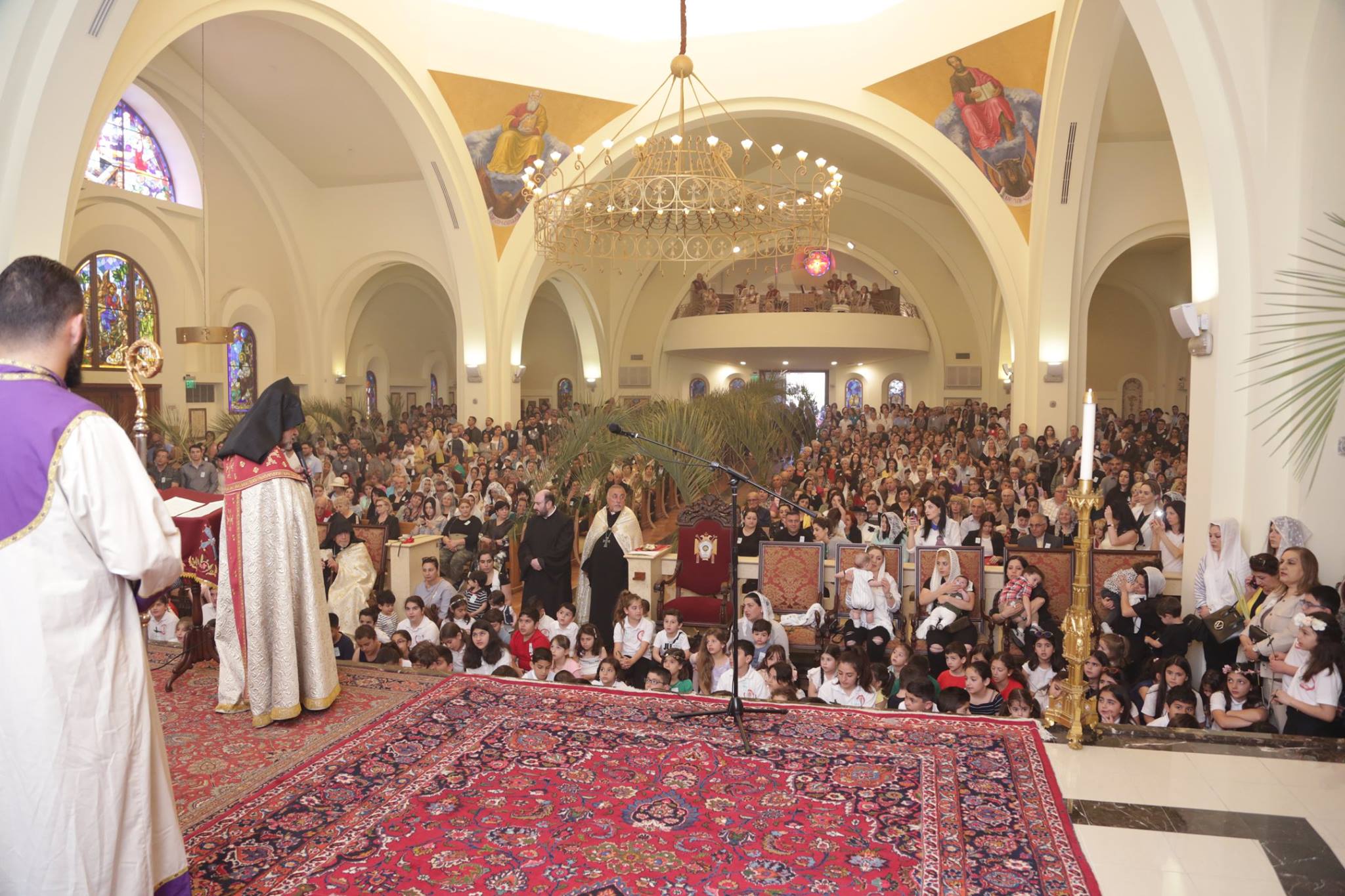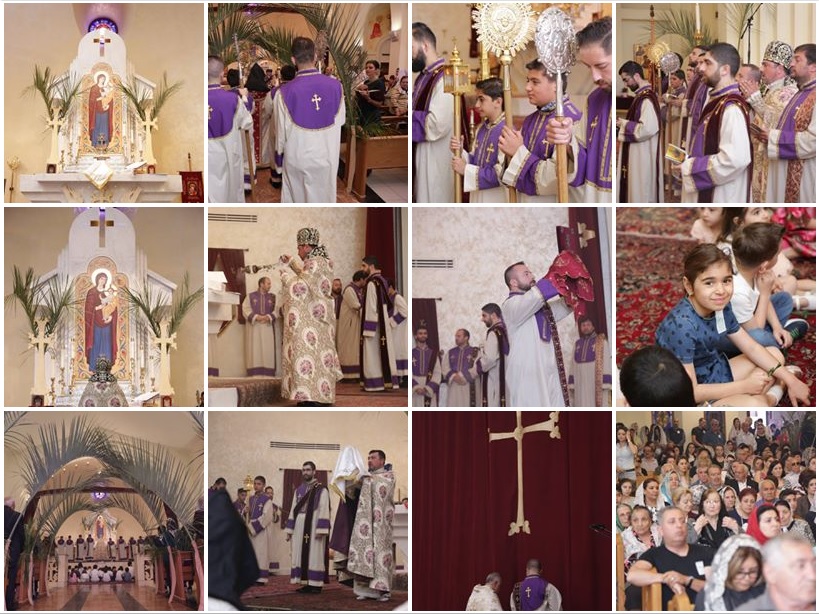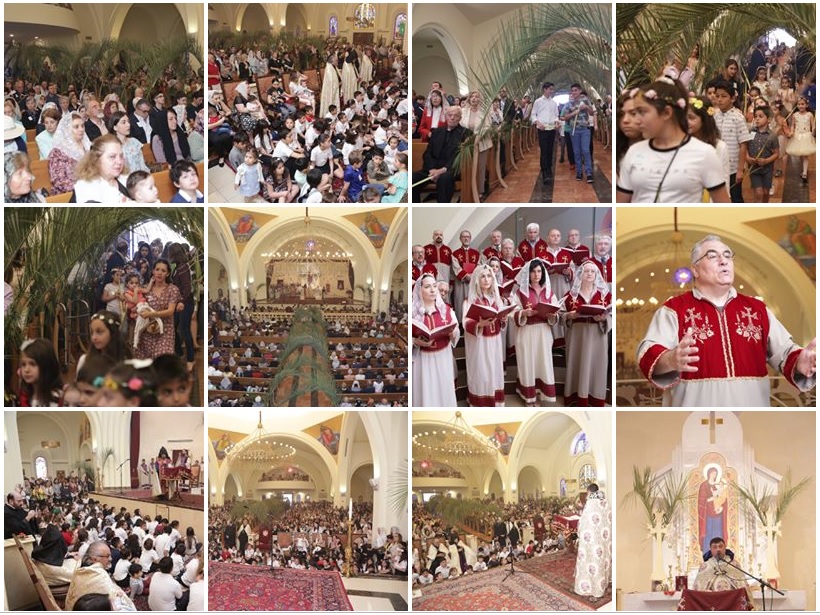
St. Leon Church "Sound of Children" Summer Camp Click Here to lean more

On April 14, the Armenian Church celebrated the Triumphant Entry of our Lord and Savior Jesus Christ into the City of Jerusalem. Thousand faithful flocked St. Leon Armenian Cathedral on Palm Sunday, the day of the official commencement of Holy Week. Decorated with olive branches, the sanctuary of St. Leon Armenian Cathedral symbolized Christ's entry into Jerusalem as the Messiah.

With the Primate presiding over the service, the day's celebrant was the Rev. Fr. Khajag Shahbazyan.
A number of children, symbolizing the excited crowd greeting Christ's Triumphant Entry into Jerusalem, had gathered at the nave. The Primate greeted the children and the congregation calling upon them to prepare to welcome Christ in each of their lives and to prepare to celebrate the Victorious Resurrection of our Lord and Savior Jesus Christ on Easter Sunday.
The traditional “Opening of the Doors” (Ternpatzek) ceremony was also held during the service.

Palm Sunday marks the commencement of Holy Week which culminates with the Victorious Resurrection of Christ, our Savior.
The History of Palm Sunday
The celebration of Palm Sunday originated in the Jerusalem Church, around the late fourth century. The early Palm Sunday ceremony consisted of prayers, hymns, and sermons recited by the clergy while the people walked to various holy sites throughout the city. At the final site, the place where Christ ascended into heaven, the clergy would read from the gospels concerning the entry of Jesus into Jerusalem. In the early evening they would return to the city reciting: "Blessed is He that comes in the name of the Lord." The children would carry palm and olive branches as the people returned through the city back to the church, where they would hold evening services.
By the fifth century, the Palm Sunday celebration had spread as far as Constantinople. Changes made in the sixth and seventh centuries resulted in two new Palm Sunday traditions - the ritual blessing of the palms, and a morning procession instead of an evening one.
The Meaning of Palm Sunday
Palm Sunday commemorates the triumphal entry of Jesus into Jerusalem to celebrate the Passover. The gospels record the arrival of Jesus riding into the city on a donkey, while the crowds spread their cloaks and palm branches on the street and shouted "Hosanna to the Son of David" and "Blessed is he who comes in the name of the Lord" to honor him as their long-awaited Messiah and King.
The significance of Jesus riding a donkey and having his way paved with palm branches is a fulfillment of a prophecy spoken by the prophet Zechariah (Zechariah 9:9). In biblical times, the regional custom called for kings and nobles arriving in procession to ride on the back of a donkey. The donkey was a symbol of peace; those who rode upon them proclaimed peaceful intentions. The laying of palm branches indicated that the king or dignitary was arriving in victory or triumph.
In the simplest of terms, Palm Sunday is an occasion for reflecting on the final week of Christ's life. It is a time for Christians to prepare their hearts for the agony of His Passion and the joy of His Resurrection.